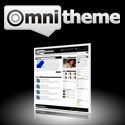How To Use HTML
Using HTML is the quite easy because of the structure of this language. But even after that the best HTML programmers can commit mistakes in the coding if they develop some bad HTML habits. In this article we will discuss some of the bad HTML habits which keep even some of the best HTML jockeys from gaining proper accessibility. Let's discuss and try to understand some of the bad HTML habits developed by many of us. In the due course of time some of us may have been using the style sheets to the extent to alleviate the dependence on FONT formatting tags, but as you make your way through the HTML world, you will definitely find out that this is some code that may work but not to the exact specifications. Bad HTML Habit 1 The first bad HTML habit is the improper use of headings. The user agents may be able to build a table of contents by reading the headings on a Web page. So, using H1 through H6 tags to structure your information is important, and using these tags simply to size text can cause problems. Bad HTML Habit2 Transparent images have become a de facto workaround by which many Web builders elude HTML's layout imitations. These images, however, can make it difficult for user agents to distinguish between real content and ancillary images such as spacers. Instead, use style sheets to control margins, spacing, and other page elements. (CSS2 also offers new styles that address white space.) Bad HTML Hab
it 3 Another no-no is using block quotes or list containers to control indention. Both are common workarounds used by Web builders to indent paragraphs or whole pages. The problem is that software may interpret and deliver information a certain way because of the tag. So, a text-to-voice reader might interpret the block quote information as a quote and read it accordingly when, in fact, you were just trying to indent a paragraph. Again, style sheets offer the best solution; they allow you to separate the formatting and visual appearance of the material from the structure of the page. Bad HTML Habit 4 Another culprit is the use of absolute text formatting tags instead of relative ones. B and STRONG, for example, may render the same in many browsers, but they do not mean the same thing. The STRONG tag, as well as the EM tag, was designed to indicate structural emphasis that could take the form of either a visual change (font, size, and style) or an audible change (inflection, volume, and pitch). If you want to improve then don't ignore these tags You need to provide alternative content if you're creating pages with certain elements: When you use SCRIPT, provide NOSCRIPT information. When using FRAMES, provide NOFRAMES information. When using EMBED, provide NOEMBED information. When using APPLETS, use ALT text. When using FRAMESET, make sure to use TITLE. Provide a text-only alternative to audio or video.
Article Source: http://www.BestToRead.com/








0 Responses to " "
Post a Comment